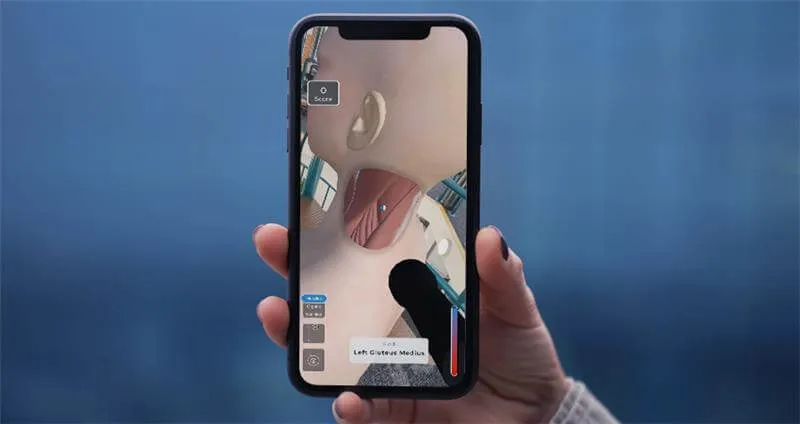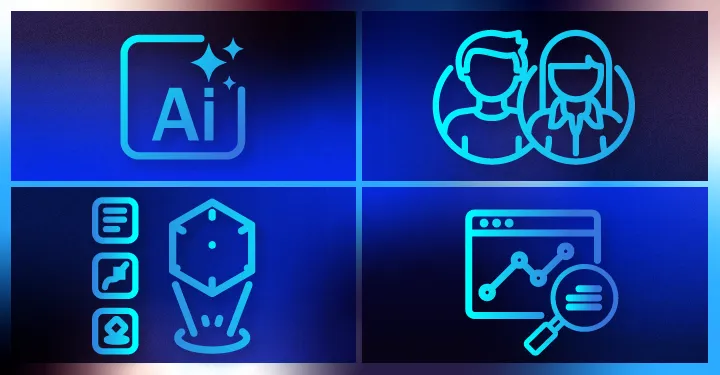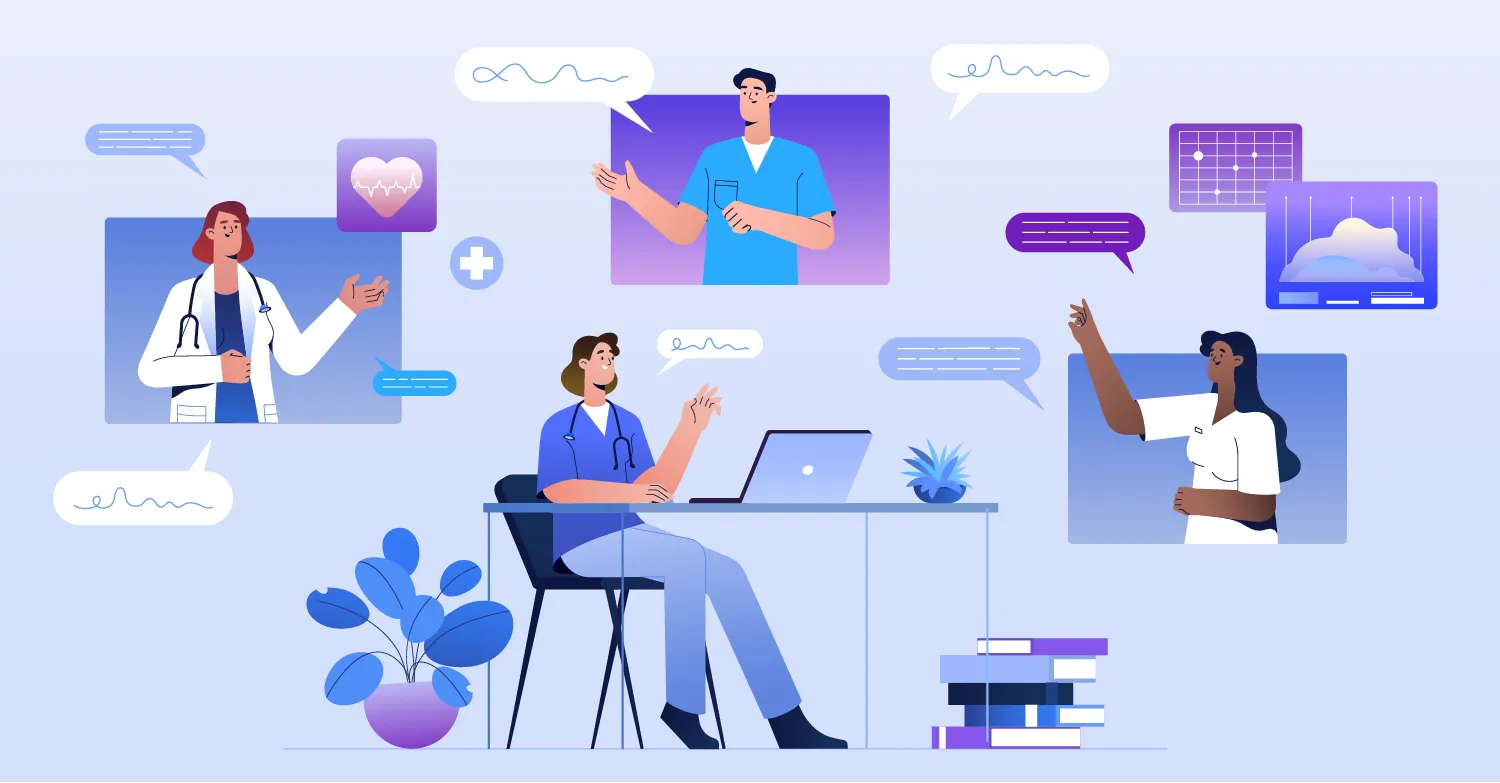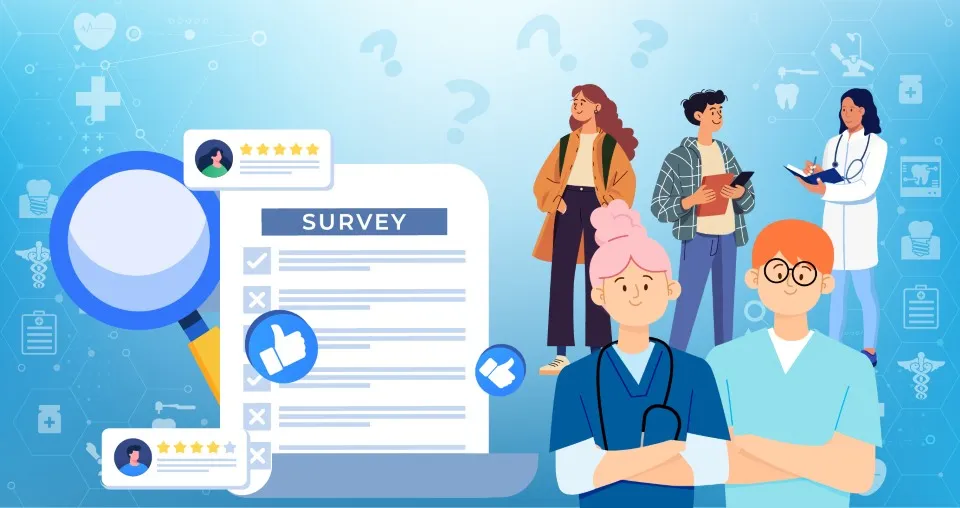Help or Hindrance: What It Means to Teach With Tech in Complex Healthcare Curricula

When healthcare students have access to immersive, AR-based learning technologies, there’s no question that stronger learning outcomes aren't far behind.
This might feel intuitively true, but (crucially) it's also backed up by the literature. As an article published in Advances in Medical Education and Practice points out, AR tools can enhance student understanding of anatomy and similar internal structures, allowing them to visualize the inside of the body in ways that manikins and textbooks just can’t match.
Here’s the catch.
No matter the advantages of technology integration in education, those benefits just won’t be felt if the tech remains tough to implement. Busy academics with limited resources often don’t have the time to master complex software or alter their curricula to fit the parameters of a new set of learning content (even if that content is expert-led and student-focused).
The solution here is, in fact, to be selective about your solutions. That is: rather than asking educators to bend around the technology, the key is to invest in technology that bends around the educator (and the curricula they champion).
That’s the heart of effective integration: finding platforms that enhance existing teaching without disrupting it. When learning tools are designed to:
- Align with program structures
- Enter effortlessly into familiar workflows
- Respect educators’ time
Then they stop being 'one more thing to manage', and turn into an engine powering even higher-quality courses that satisfy students’ needs for a digitally rich curriculum without impacting workload.
Read on to discover the pressures impacting tech adoption from an educator perspective, the standards-derived need to avoid curricular disruption, and where curriculum-aligned learning technologies fit into program structures.
 Why Poor Integrations Make It Hard for Time-Poor Educators to Teach With Tech
Why Poor Integrations Make It Hard for Time-Poor Educators to Teach With Tech
No healthcare-focused academic needs reminding of the various demands, obligations, and ancillary activities that characterize their day-to-day. According to a 2024 Frontiers in Public Health article, these can lead to stress and burnout, especially when they manifest in:
- Heavy workloads
- Ongoing demand to secure research grants
- Reduced opportunities to access self-development resources
And, tellingly,
- The need to maintain eLearning activities
Clearly, some learning technology does more to add to the burden than alleviate it. But that's not the whole story in this study. In fact, there's a paradox at play here: the authors point out that there's a real need for resources that help stressed or exhausted teachers reclaim their time and energy. That's exactly the role that learning technology (or, at least, the right learning technology) can play. And the stakes involved in unlocking it are high.
After all, as the authors warn, educator burnout can erode 'the ability to guide the young generation of healthcare practitioners adequately.' By extension, learning technology that empowers educators and eases some of the factors that introduce burnout has huge implications, not only for educator wellbeing or student learning preferences, but the readiness of future clinicians.
But, once again, this does require the right kind of learning technology, implemented in the right way. Which, in turn, means understanding the limitations educators with carefully choreographed curricula need to consider.
FIND OUT MORE ABOUT THE IMPACT OF EDUCATOR BURNOUT | 'Why Clinical Rotations Are Under Pressure (And How to Protect Student Readiness)'
 Curriculum Design, Learning Technology, and Sequencing
Curriculum Design, Learning Technology, and Sequencing
Clearly, managing learning technology is part of the challenge for faculty that engage with it. But a reluctance to adopt EdTech can equally stem from experiences with platforms that failed to support the rhythms of real-world curricula. As Ohyama et al. note in a 2025 literature review, resistance to digital tools in dental education programs can arise from the 'disruption of established routines' that some educators associate with new technologies.
Those rhythms and routines especially matter in a healthcare education context. Take dentistry, for example, in which CODA (the Commission on Dental Accreditation) explicitly requires dental schools to maintain a coherent, logically sequenced curriculum. According to Standard 2-8, accredited institutions must demonstrate:
- Ongoing curriculum review and evaluation processes
- The achievement of appropriate sequencing across curricular components
- The elimination of outdated or redundant material
In a nutshell: the routines of dental curricula are more than habit. They're carefully structured for deliberate, standards-derived reasons, any platform looking to support student learning needs to respect that structure.
SEE WHAT ADHA AND ADA LEADERS SAID ABOUT INTEGRATING TECH AROUND CODA REQUIREMENTS | '5 Key Takeaways from ‘Beyond the Buzzword: Rethinking Technology as a Catalyst for Curriculum Transformation’'
So, How Do You Teach With Tech (Without Upending Your Curriculum)?
This is the challenge, then: preserving existing curricula while unlocking the improved student outcomes that, for the Higher Education Policy Institute, were the direct result of technology-enhanced learning for 72% of learning technology projects.
The answer is to prioritize learning platforms that:
- Contain enough breadth to cover all the essential topics within a given course
- Come pre-equipped with learning content authored by experts and drawn from reputable sources
- Allow for easy access to that content via features like scannable QR codes
- Are pre-aligned to existing curricula to support seamless educational technology integration
With these capabilities in place, teaching with tech shifts from a potential burden to a win-win.
Students can take advantage of digitally enhanced lessons, quizzes, simulations, and AR experiences that significantly augment their learning. At the same time, these enhancements require minimal intervention from educators and enable them to devote more teaching time to high-value pedagogy.
HOW DO YOU INTEGRATE TECH-ENHANCED LEARNING RESOURCES INTO CURRICULA? READ ON | 'Fitting the Pieces Together: 3 Easy Ways to Embed Pre-Mapped Learning Technology into Core Modules'
When Digital Tools Align With Curricula: 2 Key Benefits in Action
It's widely acknowledged that students have plenty to gain from robust digital learning infrastructures. But the value of curriculum-aligned platforms is that educators equally benefit from a raft of advantages with no real effort required.
When expert-authored resources are supplied in the form of a simple QR code to appendage to a PowerPoint, those advantages quickly come to the fore.
Let's take a look at two examples: one on the workload-sparing pedagogies these platforms unlock, and another covering the ease with which cohort progress can be monitored.
1) Flipping the Classroom (And Educator Workload Expectations)
Technology-backed pedagogies can take plenty of forms, but the flipped classroom model suggests itself as an excellent means of improving both the learning and the teaching experience with the help of well-integrated digital platforms.
When pre-made, expert-authored digital learning resources are fully enmeshed in a given program, educators gain the power to supply students with key learning materials prior to class, then use in-person instruction for discussion, practice, or covering the finer points.
For learners, research published in Educational Research Review suggests students in flipped classrooms enjoy better learning outcomes.
But for those time-pushed educators discussed above, this teaching method can (perhaps surprisingly) reduce, rather than overload, the amount of teaching work on their plates.
This was a point made by Dr JoAnn Gurenlian at an Immersify webinar: she noted that hours-long c lectures can be tiring for educators, whereas a flipped format offers a more rewarding, engaging, and varied teaching experience for the people behind the lectern.
DISCOVER THE VALUE OF FLIPPED CLASSROOMS AND LEARN HOW TO IMPLEMENT THEM | 'Education Leaders: Should Your Institution Adopt a Flipped Classroom Model?' | 'How to Flip Your Classroom With Immersify: Embracing Flipped Education in 5 Simple Steps'
2) Learning Analytics for Higher Education: Effortless Insight For Low-Lift Uplift
The beauty of the example above is that existing curricula don't need to change in order to accommodate digital learning elements: the resources can be pre-made and enmeshed with current program structures, giving students the chance to experience relevant material ahead of classes educators already have lined up.
Similarly, the right platform will offer ways to draw higher levels of insight into how students are experiencing existing curricula, allowing educators to get a sense of what’s working and what may benefit from further refinement.
It’s well understood that learning analytics (for higher education in particular) have plenty to commend themselves in terms of targeted student intervention. A 2025 article in Research in Learning Technology points to identified benefits ranging from improved student engagement to better retention, and these advantages will only be magnified when educators have access to (for example) app-based quiz results on the finer points of head and neck anatomy within a given cohort.
But in addition to these granular insights, a well-integrated learning platform is equally capable of prompting more holistic evaluations of curriculum design. Educators might start noticing, for example, that one topic consistently returns lower app-based quiz scores or prompts a disproportionate amount of clinical skill practice in an AR simulation. This, in turn, might facilitate intelligent tweaks to current curricula, allowing student competence and confidence to be better reflected in the time dedicated to each topic.
That’s the power of well-integrated learning technology. Educators reclaim their time, classrooms and curricula become more adaptive, and student outcomes improve without increasing educator workload.
HERE'S WHY SCALED-UP EDUCATION MATTERS | 'How the Dental Hygienist Shortage Impacts Education and Access'
Key Takeaways on Teaching With Tech in Healthcare Programs
In healthcare education, successful technology adoption is really boils down to fitting the frameworks used (and trusted) by faculty.
Well-integrated learning technology:
- Complements curriculum structures
- Respects faculty time and energy
- Amplifies the effectiveness of both students and staff
The real power of technology adoption in education is in those small but essential forms of alignment that help educators spend less time managing platforms and more time delivering meaningful instruction.
Explore more insights from our Curriculum Integration series
Keep ReadingFrequently Asked Questions on Integrating Technology Into the Curriculum
Teaching with tech means using digital tools and platforms to enhance, rather than overhaul, existing curricula. For healthcare educators, this might involve AR simulations, app-based quizzes, or digital case studies that reinforce classroom teaching. The key is ensuring technology bends around the curriculum instead of forcing faculty to adapt their teaching to the tool.
Good technology helps universities balance quality with efficiency. When digital platforms are curriculum-aligned, they save faculty time, reduce workload stress, and improve student engagement. For students, good tech ensures learning is interactive and accessible; for institutions, it strengthens outcomes while proving value to stakeholders.
Learning analytics provide educators with real-time insights into how students are progressing. In healthcare education, this might mean spotting a skill area where students consistently underperform on simulation-based assessments. With this data, faculty can adapt teaching or adjust curricula, helping safeguard student readiness without adding extra workload.
Ready to Teach With Tech (In Alignment With Your Curriculum?
Sign up to our mailing list for more curriculum-first insights or reach out to our experts directly to discover how Immersify can map effortlessly to your program.
Editor's note: this piece was updated in October 2025 for clarity and consistency across the Curriculum Integration series.
This article was reviewed for clinical accuracy and educational relevance by Dr. Martin Ling, a GDC-registered dentist and Fellow of the Higher Education Academy.
Join our mailing list
Get the latest updates on immersive learning, industry trends, and resources delivered straight to your inbox.



